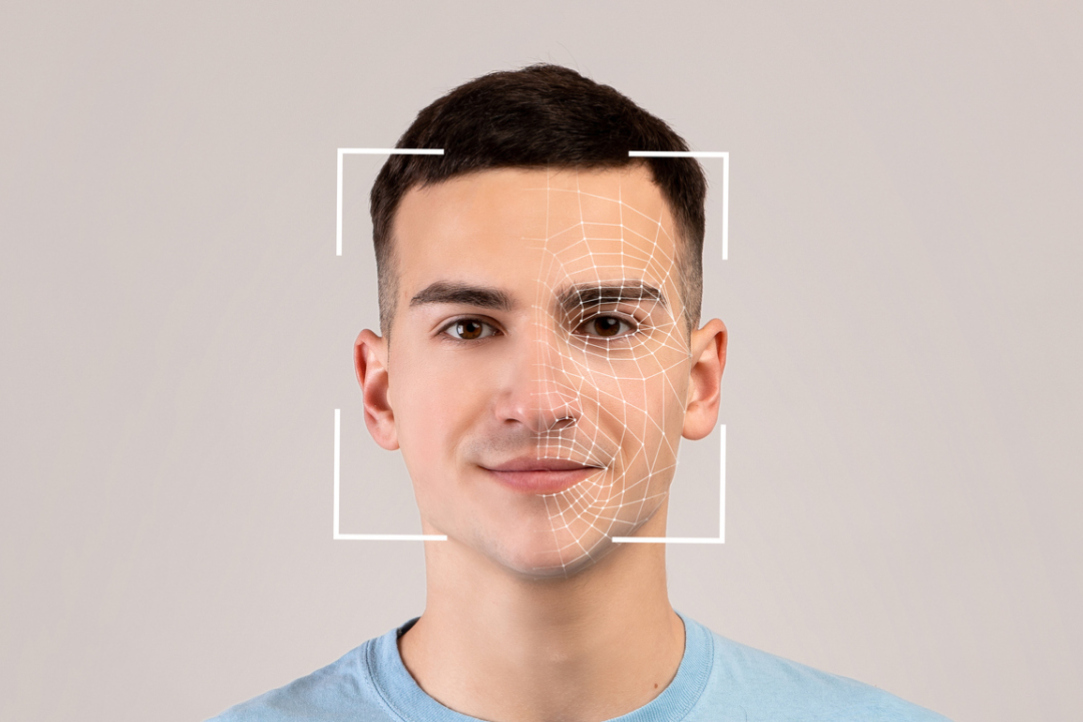Neuroscientists from HSE University Learn to Predict Human Behaviour by Their Facial Expressions

Willingness to donate to charity is written all over the face.
Researchers at the Institute for Cognitive Neuroscience at HSE University are using automatic emotion recognition technologies to study charitable behaviour. In an experiment, scientists presented 45 participants with photographs of dogs in need and invited them to make donations to support these animals. Emotional reactions to the images were determined through facial activity using the FaceReader program. It turned out that the stronger the participants felt sadness and anger, the more money they were willing to donate to charity funds, regardless of their personal financial well-being. The study was published in the journal Heliyon.
The research was supported by a mega-grant from the Russian government as part of the national project ‘Science and Universities.’
Charitable behaviour is a complex psychological process with motives that are not fully understood. Emotional state is one of the key factors influencing the willingness to give one's resources to another. However, the question of how specific emotions are related to donations remains a subject of debate, as previous studies on this topic have yielded conflicting results.
One of the main reasons is methodological limitations in data collection. Most studies on charitable behaviour use subjective methods: volunteers themselves report their emotions and how they affect donations. However, participants do not always understand their feelings or are not willing to speak about them openly. Moreover, depending on the direction of charitable activity (helping sick people, helping animals, supporting environmental initiatives, and others), the same emotions can differently influence the willingness to donate. Therefore, to develop effective charity advertising, it is important to have objective data on the influence of emotions on the willingness to donate, taking into account the goals of fundraising.
Researchers Anna Shepelenko, Vladimir Kosonogov, and Anna Shestakova from the HSE Institute for Cognitive Neuroscience were the first in the world to use an automatic emotion recognition program to evaluate the effectiveness of charity appeals. In the experiment, scientists used FaceReader to record the facial expressions of volunteers while viewing photos of dogs in various conditions, including homeless, domestic, sick, healthy, adult, and puppies. Participants were given 320 rubles, which they could fully or partially donate to the animal aid fund during the experiment. The remaining amount could be kept for themselves.
Dogs were specifically chosen for the study because society's attitude towards them is ambiguous: they can be perceived as both victims and threats. In these conditions, charity appeals can evoke contradictory or hidden emotions that are difficult to detect through surveys or focus groups but can be recognised by facial expressions.

Co-author of the study, Junior Research Fellow at the Centre for Cognition & Decision Making at the Institute for Cognitive Neuroscience, HSE University
Currently, affective computing is still in the early stages of its development and is not widely used in the industry. However, in the coming years, its widespread implementation in various business and scientific fields can be expected. Technologies like FaceReader are already being used for diagnosing mental disorders, improving the quality of online education, assessing customer satisfaction, and in some other areas. Our study clearly shows the prospects of using affective computing to predict the effectiveness of social advertising, creating a basis for further research and practical application.
The main results of the study showed that people are inclined to donate more when charity appeals provoke unpleasant emotions in them. In particular, participants gave larger amounts to animals whose images evoked sadness and anger. These results are confirmed by both self-reports of emotions and affective computing data.
At the same time, for some other emotions, researchers found differences between survey data and FaceReader data. According to self-reports, surprise, disgust, and fear also contributed to increased donations, but FaceReader data did not confirm this. According to the authors, these differences may have arisen due to the timing of emotion recording: the program analysed reactions during the first presentation of pictures and immediately before the donation decision, whereas self-reports were made after a second viewing of the images. This time gap could have changed participants' perception of their emotions.
Additionally, the formulation of questions about specific emotions could have caused cognitive biases and influenced respondents' answers so that they indicated not only the emotions they experienced but also those they considered appropriate depending on the context of the image. Based on this, researchers conclude that affective computing complements self-report data, allowing for a more accurate identification of emotions at the moment of decision-making and reducing the influence of experimental procedures or cognitive biases on research results.
It is noteworthy that donations were associated with the individual perception of the value of money: the higher the subjective significance of the reward for participating in the experiment (320 rubles), the less willing participants were to donate to charity, while their personal level of financial well-being did not affect the amount of donations. This data clarifies the results of earlier publications, which showed contradictions regarding the relationship between financial well-being and the willingness to make donations.
Co-author of the study, Junior Research Fellow at the Centre for Cognition & Decision Making at the Institute for Cognitive Neuroscience, HSE University
This study contributes to the understanding of charitable behaviour, and we hope that the obtained results will be useful for non-profit organisations. At the same time, it is important to note some limitations: our results do not take into account the long-term impact of charity advertising on the audience.
Indeed, unpleasant emotions can increase the amount of donations during initial contact, but regularly repeated negative charity appeals can provoke empathy fatigue or avoidance—people may simply exclude such messages from their information field. Thus, to further study the impact of emotions on charity, longitudinal studies should be conducted, in which changes in donors' behaviour can be registered over several months or even years.
See also:
Script Differences Hinder Language Switching in Bilinguals
Researchers at the HSE Centre for Language and Brain used eye-tracking to examine how bilinguals switch between languages in response to context shifts. Script differences were found to slow down this process. When letters appear unfamiliar—such as the Latin alphabet in a Russian-language text—the brain does not immediately switch to the other language, even when the person is aware they are in a bilingual setting. The article has been published in Bilingualism: Language and Cognition.
HSE Experts Highlight Factors Influencing EV Market Growth
According to estimates from HSE University, Moscow leads in the number of charging stations for electric vehicles in Russia, while Nizhny Novgorod ranks first in terms of charging station coverage, with 11.23 electric vehicles per charging station, compared to 14.41 in Moscow. The lack of charging infrastructure is one of the key factors limiting the growth of the electric vehicle market. This is stated in the study titled ‘Socio-Economic Aspects of Introducing Electric Vehicles in Commercial Transportation’ conducted by experts from the Institute of Transport Economics and Transport Policy Studies at HSE University.
Machine Learning Links Two New Genes to Ischemic Stroke
A team of scientists from HSE University and the Kurchatov Institute used machine learning methods to investigate genetic predisposition to stroke. Their analysis of the genomes of over 5,000 people identified 131 genes linked to the risk of ischemic stroke. For two of these genes, the association was found for the first time. The paper has been published in PeerJ Computer Science.
First Digital Adult Reading Test Available on RuStore
HSE University's Centre for Language and Brain has developed the first standardised tool for assessing Russian reading skills in adults—the LexiMetr-A test. The test is now available digitally on the RuStore platform. This application allows for a quick and effective diagnosis of reading disorders, including dyslexia, in people aged 18 and older.
Low-Carbon Exports Reduce CO2 Emissions
Researchers at the HSE Faculty of Economic Sciences and the Federal Research Centre of Coal and Coal Chemistry have found that exporting low-carbon goods contributes to a better environment in Russian regions and helps them reduce greenhouse gas emissions. The study results have been published in R-Economy.
Russian Scientists Assess Dangers of Internal Waves During Underwater Volcanic Eruptions
Mathematicians at HSE University in Nizhny Novgorod and the A.V. Gaponov-Grekhov Institute of Applied Physics of the Russian Academy of Sciences studied internal waves generated in the ocean after the explosive eruption of an underwater volcano. The researchers calculated how the waves vary depending on ocean depth and the radius of the explosion source. It turns out that the strongest wave in the first group does not arrive immediately, but after a significant delay. This data can help predict the consequences of eruptions and enable advance preparation for potential threats. The article has been published in Natural Hazards. The research was carried out with support from the Russian Science Foundation (link in Russian).
Centre for Language and Brain Begins Cooperation with Academy of Sciences of Sakha Republic
HSE University's Centre for Language and Brain and the Academy of Sciences of the Republic of Sakha (Yakutia) have signed a partnership agreement, opening up new opportunities for research on the region's understudied languages and bilingualism. Thanks to modern methods, such as eye tracking and neuroimaging, scientists will be able to answer questions about how bilingualism works at the brain level.
How the Brain Responds to Prices: Scientists Discover Neural Marker for Price Perception
Russian scientists have discovered how the brain makes purchasing decisions. Using electroencephalography (EEG) and magnetoencephalography (MEG), researchers found that the brain responds almost instantly when a product's price deviates from expectations. This response engages brain regions involved in evaluating rewards and learning from past decisions. Thus, perceiving a product's value is not merely a conscious choice but also a function of automatic cognitive mechanisms. The results have been published in Frontiers in Human Neuroscience.
AI Predicts Behaviour of Quantum Systems
Scientists from HSE University, in collaboration with researchers from the University of Southern California, have developed an algorithm that rapidly and accurately predicts the behaviour of quantum systems, from quantum computers to solar panels. This methodology enabled the simulation of processes in the MoS₂ semiconductor and revealed that the movement of charged particles is influenced not only by the number of defects but also by their location. These defects can either slow down or accelerate charge transport, leading to effects that were previously difficult to account for with standard methods. The study has been published in Proceedings of the National Academy of Sciences (PNAS).
Electrical Brain Stimulation Helps Memorise New Words
A team of researchers at HSE University, in collaboration with scientists from Russian and foreign universities, has investigated the impact of electrical brain stimulation on learning new words. The experiment shows that direct current stimulation of language centres—Broca's and Wernicke's areas—can improve and speed up the memorisation of new words. The findings have been published in Neurobiology of Learning and Memory.


